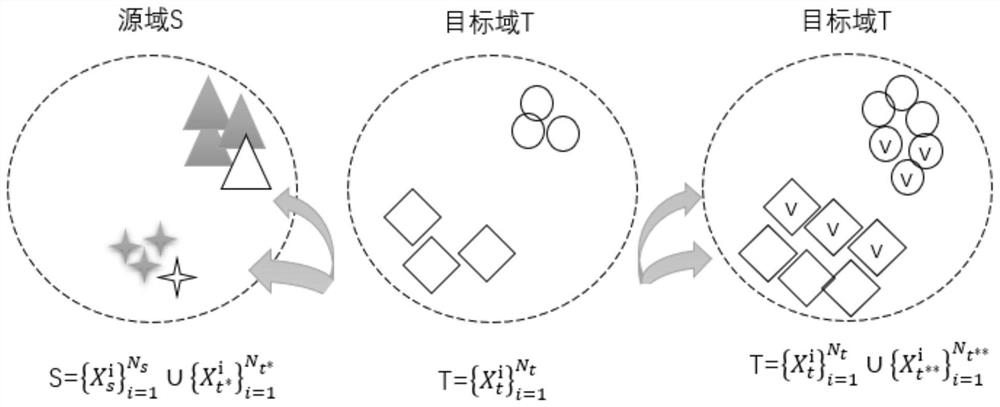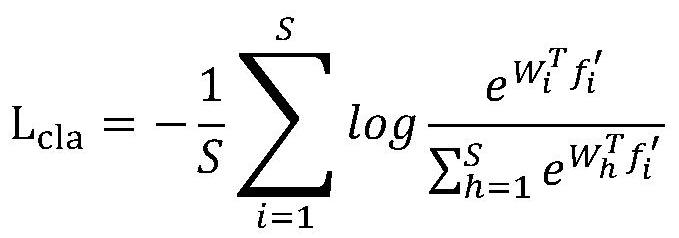Unsupervised pedestrian re-identification method for enhancing sample data
A person re-identification, sample data technology, applied in the field of computer vision, can solve problems such as unsupervised domain adaptation, imbalance of positive and negative examples, etc.
- Summary
- Abstract
- Description
- Claims
- Application Information
AI Technical Summary
Problems solved by technology
Method used
Image
Examples
Embodiment Construction
[0024] An unsupervised person re-identification method for enhancing sample data, comprising the following steps:
[0025] 1) In the specific example of the unsupervised person re-identification method based on enhanced sample data, the labeled source domain data S is preprocessed into a picture of a certain size, and random horizontal flipping and random erasing are used to prevent certain overfitting. source domain data Input into the generation confrontation network to generate sample data similar to the style of the target domain Considering the generalization of the network, generating too much target domain style data and giving the network too much supervision information is not conducive to the training of the network, so for each source domain sample N s Corresponding to generate a sample data of the target domain style, namely The generated new samples have label information, combined with the original source domain data Common categorical cross-entropy loss ...
PUM
 Login to View More
Login to View More Abstract
Description
Claims
Application Information
 Login to View More
Login to View More - R&D Engineer
- R&D Manager
- IP Professional
- Industry Leading Data Capabilities
- Powerful AI technology
- Patent DNA Extraction
Browse by: Latest US Patents, China's latest patents, Technical Efficacy Thesaurus, Application Domain, Technology Topic, Popular Technical Reports.
© 2024 PatSnap. All rights reserved.Legal|Privacy policy|Modern Slavery Act Transparency Statement|Sitemap|About US| Contact US: help@patsnap.com










